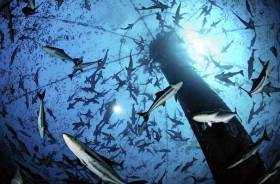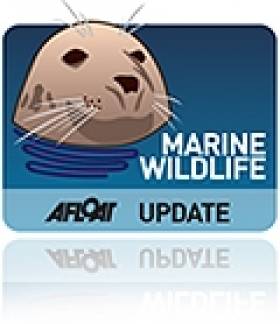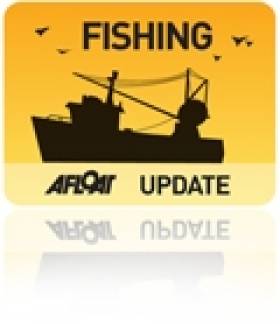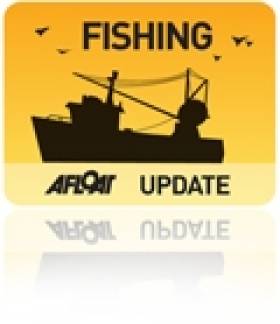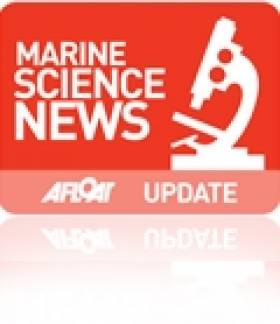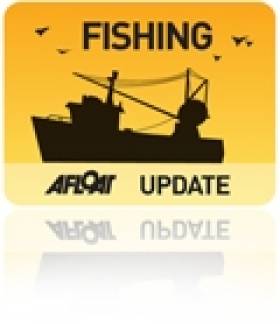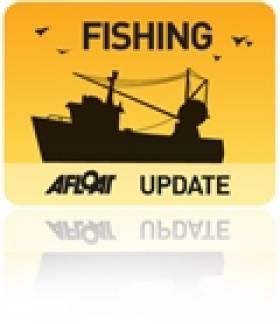Displaying items by tag: aquaculture
€7m Aquaculture Project to Support Sustainable Growth
With concerns around sustainability of food security continuing to rise, a team of European aquaculture experts will begin a four-year study worth almost €7 million to establish new strategies and models for sustainable growth in the industry.
The Tools for Assessment and Planning of Aquaculture Sustainability (TAPAS) project, led by the University of Stirling, will create cost-efficient management tools and practices for the European aquaculture sector to investigate the limits to fish farming activity in a location, social interactions, potential environmental impacts and any future risks. The Marine Institute is the Irish partner in the EU Horizon 2020 funded project, with Dr Dave Jackson leading a key work package feeding into the development of an aquaculture ‘toolbox’.
Professor Trevor Telfer of the Institute of Aquaculture is leading the multi-partner study which starts this month and will seek to establish a comprehensive ‘toolbox’ to support transparent and efficient licensing, enhance environment sustainability and aquatic food security while tapping into the potential for food production and jobs.
The consortium will evaluate structures currently in operation across the EU’s seas, lakes and rivers, examining various environments and developing new approaches to deliver computer-based support systems for sustainable aquaculture expansion. The work is in line with the EU’s Marine Strategy Framework Directive to protect marine environments more effectively and will provide consistent real-time monitoring, observation, early forecasting and management technologies.
The research team will collaborate with industry, regulators, certifiers and other stakeholders to ensure the toolbox they create is accessible, using training and outreach activities to improve the image of European aquaculture and promote an integrated sustainability strategy.
Professor Telfer, Stirling Institute of Aquaculture said: “As Europe continues to produce millions of tonnes of food each year, we want to ensure this industry is feeding the world in a sustainable way, while taking care of the environment.
By developing new, flexible and unified approaches to aquaculture planning we aim to strengthen sustainable growth in the vital marine and freshwater sectors.”
Dr Dave Jackson, Marine Institute said: “The breadth of experience gained through our 15 consortium partners allows us to bring together sophisticated technologies, computer models and decision making capabilities into a single, streamlined entity for regulators and producers throughout Europe to use.
The collaborative work will play a major role in the European Commissions’ strategy to achieve smart growth in aquaculture production across the region’s seas. Aquaculture in European waters is a key driver for the blue economy representing approximately 5.4 million jobs and generating a gross added value of almost €500 billion a year. ”
The project will also support Ireland’s vision for aquaculture, ' a sustainable and competitive aquaculture sector, where production will grow according to market and consumer demands and in balance with nature and society' which is outlined in the National Strategic Plan for Sustainable Aquaculture Development.
#Aquaculture - Marine Minister Simon Coveney yesterday (12 June) launched a public consultation on a draft National Strategic Plan for Sustainable Aquaculture Development, proposing 24 actions and initiatives to boost the sustainable growth of aquaculture.
The reformed Common Fisheries Policy requires EU member states to prepare multi-annual national strategic plans to drive forward the sustainable development of aquaculture, and the draft plan launched this week has been prepared in that context.
Commenting on the plan, Minister Coveney said: “Aquaculture is a rapidly growing industry internationally with very rapid expansion opportunities identified over the coming decades to meet the ever growing seafood demand arising from population growth and increased consumption in Asia.
"Aquaculture internationally produced 67 million tonnes of farmed fish in 2012 and it is projected to increase to 85 million tonnes by 2022. That global projection to increase aquaculture production by 18 million tonnes by 2022, puts in context the proposals in the National Strategic Aquaculture Plan to increase Irish aquaculture production by 45,000 tonnes, across all species, by 2023.
"While the targets in the plan are ambitious in the context of the past performance of this industry nationally, they are modest in the context of the global expansion which this industry will experience over the next seven years.”
Minister Coveney added that “our aquaculture industry has long been recognised as an area with potential to grow significant value and employment and to sustainably provide the raw material to enhance our processed seafood exports. Clearly, that has not happened and there are many complex reasons for that.
"At the same time, concerns have been raised about the environmental sustainability of the industry. In this plan, I have sought to identify all of the issues affecting both the growth potential and sustainability of the aquaculture industry and I am proposing a suite of 24 tailored actions to boost sustainable growth, while allaying legitimate areas of concern.
"With these initiatives, I believe we can get our aquaculture sector back on a path of sustainable growth and provide much needed jobs in our coastal communities."
Actions proposed in the draft plan include the introduction of a set of guiding principles for the sustainable development of aquaculture, recommended to the minister by the Marine Institute, together with scale limits and phasing in relation to the development of individual offshore salmon farms, also recommended by the Marine Institute.
Other initiatives include a review of the regulatory framework for aquaculture licensing and associated administrative procedures, and financial supports to build capacity, foster knowledge, innovation and technology transfer and expert advice and training for aquaculture operators in business planning, disease management and environmental best practice.
Submissions on the draft plan and related environmental report and appropriate assessment are invited by 24 July 2015 to [email protected]. Relevant documents are available for download HERE.
Galway Bay Fish Farm Decision Coming 'Soon' Says Minister
#FishFarm - Marine Minister Simon Coveney will make a decision on the controversial Galway Bay fish farm "as soon as possible", as The Irish Times reports.
Bord Iascaigh Mhara's ambitious proposal off the Aran Islands for a 500-hectare organic salmon farm – which would be the largest of its kind in Europe – was pushed back over a year ago amid protests from angling and community groups opposed to the scheme, and concerns from the EU over its environmental impact.
It is now one of a whopping 600 applications for aquaculture licences of various scopes under consideration by the minister.
Many of these are said to have been in the system for more than five years – costing the State some €60 million in investment opportunities, as the Irish Farmers' Association claims.
Discussing his department's plans for aquaculture in replies to Dáil questions this week, Minister Coveney maintained there is a "strict separation" between his role as "decision maker" and his duty to promote development in the industry.
The Irish Times has more on the story HERE.
SEAFARE Seville Seminar Highlights the Potential of Wetlands Aquaculture
The SEAFARE (Sustainable and Environmentally Friendly Aquaculture for the Atlantic Region of Europe) project held a one-day seminar at Instituto de Investigación y Formación Agraria y Pesquera (IFAPA)'s headquarters in Seville (Spain) on the 30th October 2013 as part of the dissemination activities carried out to present the main outcomes of the project. The seminar, entitled "The potential for wetland aquaculture; balancing economic development and conservation benefits", focused on the potential benefits of implementing wetland aquaculture in the Gulf of Cadiz region, and attracted more than 50 stakeholders from Spain, Portugal and the United States.
The morning session included two sets of presentations, where the project partners explained their main findings relating to wetlands aquaculture, including the benefits of integrated multitrophic aquaculture systems and the ecosystem services wetlands aquaculture can offer to society. The presentations are downloadable from the project website (www.seafareproject.eu). Following the morning session, a round table discussion took place in which environmental managers, aquaculture industry representatives and scientists had the opportunity to present their own views on the potential of wetlands aquaculture in the Gulf of Cadiz region.
Antonio Concepción, president of the Aquaculture Business Association in Andalucía, said: "There is no doubt wetlands aquaculture is beneficial for the region in terms of economic activity, employment generation, and also environmentally, as it is proven that wetlands aquaculture can contribute to the regeneration of abandoned landscapes. However, we should take into account that production costs are higher than off-shore aquaculture, but the fish produced in wetland systems are of better quality than those produced in offshore aquaculture. These factors make the product more expensive and it is more difficult to find our place in the market. It is not all about wetland aquaculture benefits, we must put an extra effort into the creation of a new brand and find new commercialisation channels".
The afternoon session included a visit to the facilities of Veta la Palma, an aquaculture farm located on an island in the Guadalquivir River, 10 miles inland from the Atlantic Ocean. Veta la Palma provides a good example of how aquaculture can be used as a driver for wetland reconstruction. The attendees had the opportunity to see for themselves how beneficial the implementation of wetlands aquaculture in the region can be from both economic and ecological perspectives.
Dr. Pedro Cañavate, researcher at IFAPA El Toruño and one of the organisers of the seminar, said: "I hope this seminar will help to make stakeholders from the region aware of the real potential of wetlands aquaculture for the region. This meeting aimed to show stakeholders that we have the optimal conditions to develop wetlands aquaculture, and we also have the know-how to do it. Now it is up to policy makers and industry to take the initiative".
The SEAFARE project aims to promote the diversification of the aquaculture industry by providing a greater range of species and alternative environmentally-friendly production systems. All the initiatives developed by the project are assessed for their commercial applicability through close collaboration with stakeholders and SMEs. The project involves 14 partners, bringing together applied R&D centres, aquaculture industry organisations and environmental agencies across the Atlantic maritime region to promote the sustainable expansion of European aquaculture.
For more information about SEAFARE, please visit www.seafareproject.eu .
Irish Online Aquaculture Service Wins European Award
#aquaculture – ASIMUTH, an Irish led EU Framework 7 funded project (FP7), was recently awarded the COPERNICUS (Global Monitoring for Environment and Security) Masters Prize for best earth-monitoring service for European citizens 2013. The pan-European project developed an online alert system (HAB Forecast) to provide an early warning to the aquaculture industry of imminent harmful algal blooms (red tides).
ASIMUTH is led by the Daithi O'Murchu Marine Research Station (Bantry) and involves scientists and SMEs from five European Atlantic States (Ireland, Scotland, France, Spain and Portugal). Irish partners include the Marine Institute and Irish SME Numerics Warehouse Ltd (Galway). According to the project co-ordinator, Dr Julie Maguire (DOMMRS), "the new service gives producers time to adapt their culture and harvesting practices before a bloom arrives in their area, reducing potential losses which can have a devastating impact on aquaculture businesses".
In Ireland, closures, due to harmful algal blooms, of shellfish growing areas of up to 10 months have been experienced in the past. Other impacts such as losses of farmed fish and widespread mortalities of wild fish and benthic organisms have been experienced during red tide blooms in 2005 and 2012.
Joe Silke, Head of Shellfish Safety at the Marine Institute noted that "This is the first forecast system of its kind and was designed to combine information from monitoring stations, satellite data, biological and physical oceanic models to produce regular forecasting reports to the shellfish industry. Working with neighbouring countries gives us a better chance of early detection of these blooms and inter-regional water currents can be modelled to estimate the potential impact of these blooms in advance of their arrival at aquaculture areas."
The ASIMUTH project - Applied Simulations and Integrated Modelling for the Understanding of Toxic and Harmful Algal Blooms is co-funded under the 7th EU Framework 7 Programme for Research and Technological Development (2007-2013).
The Best Service Challenge is one of nine categories in the European Earth monitoring competition (COPERNICUS Masters)and aims to increase awareness of existing Earth monitoring services and their benefits to European citizens. As winner of the Best Service Challenge 2013, HAB Forecast will benefit from a substantial satellite data quota worth €40,000 made available with financial support by the European Commission.
The HAB Forecast bulletin is available on the ASIMUTH website www.asimuth.eu.
#Fishing - "Absolutely hammered" is how a Carlingford Lough oyster farmer describes the state of his business after £350,000 (€404,000) worth of his stock was destroyed by a virus in the recent heatwave.
And as the Belfast Telegraph reports, Darren Cunningham now fears financial ruin after at least 80% of his juvenile oysters were wiped out by the ostreid herpes virus, which kills the shellfish when the water temperature rises above 16 degrees.
Unfortunately for Cunningham and fellow oysterman Harold Henning, who fears a total loss of his young oysters, Stormont has no compensation scheme in place for lost stocks in Northern Ireland.
The Belfast Telegraph has more on the story HERE.
#FishFarm - Bord Iascaigh Mhara (BIM) has responded to concerns from environmental groups that an ingredient in treatments for sea lice in salmon farms poses a threat to wild marine life.
As Galway Bay FM reports, campaigners Galway Bay Against Salmon Cages - one of the groups opposed to the planned Galway Bay fish farm - say that cypermethrin, an active ingredient in veterinary medicine used to treat sea lice, is toxic to aquatic organisms.
BIM aquaculture manager Donal Maguire attempted to play down fears over the use of the pesticide, saying it has been fully tested for toxicology in the marine environment.
However, another campaign group claims BIM's position is contrary to the manufacturer's own warnings on the use of the drug.
According to FishNews.eu, Friends of the Irish Environment (FIE) cited the Irish Medicines Board's product description for cypermethrin, which states that it is "dangerous to fish and other aquatic life" and demands that the chemical "should not be allowed to contaminate water".
FIE went on to describe cypermethrin as "a biocide which kills life, not a medicine that saves lives" and as "a highly active neurotoxin" with "known effects on fish and, most sensitive of all, crustaceans such as crabs and lobsters. Bathers and watersports [enthusiasts] may also be at risk."
Earlier this month, Inland Fisheries Ireland (IFI) expressed "serious concerns" over the findings of a study on wild salmon in Ireland that claimed fish farm schemes were less harmful to wild fish than pollution and possibly even beneficial to wild catchments.
IFI is among the significant opposition to BIM's proposed organic salmon farm off the Aran Islands, a 500-hectare project that would be the largest of its kind in Europe and create hundreds of jobs in the locality.
Marine Institute Stands over Scientific Paper on Aquaculture Impacts on Wild Salmon Stock
#aquaculture – A recent Marine Institute study published in the peer reviewed international Agricultural Sciences journal (June 2013) found no correlation between the presence of aquaculture and the performance of adjacent wild salmon stocks.
The study by Dr. Dave Jackson and colleagues at the Marine Institute examined geographic and temporal trends in Atlantic salmon stock abundance at a River Basin District level and evaluated the effect of salmon aquaculture sites and freshwater habitat quality as potential drivers of stock abundance.
This study found no correlation between the presence of aquaculture and the performance of adjacent wild salmon stocks. Freshwater habitat quality was found to have a highly significant correlation with stock status, suggesting that it may be a key driver, implicated in the survival of individual stocks.
The paper, Evaluation of the impacts of aquaculture and freshwater habitat on the status of Atlantic salmon stocks in Ireland, is available to download for free. An open access fee is payable by the author only after a paper has been peer reviewed and accepted for publication.
Access to quality research is vital to the scientific community and beyond and open access ensures that members of the public and the scientific community can freely access quality research without having to pay a download fee.
The Marine Institute stands firmly over all peer reviewed scientific papers published by its staff, and we support open access to high quality research.
The link to the journal is http://www.scirp.org/journal/as/
and the publication can be downloaded as a PDF document directly at this link: http://dx.doi.org/10.4236/as.2013.46A010
#Fishing - The Irish Times reports that Inland Fisheries Ireland (IFI) has expressed "serious concerns" over the findings of a new study on wild salmon in Ireland.
The State agency for Ireland's fisheries argues that the study - which concluded not only that pollution has a greater impact on wild salmon numbers than fish farming, but also that salmon catchments in close proximity to aquaculture schemes were some of the best performing - is based on flawed methodology.
IFI is among the chorus of voices opposed to the planned organic salmon farm off the Aran Islands in Galway Bay - a 500-hectare project by Bord Iascaigh Mhara (BIM) that would be the largest of its kind in Europe if given the go-ahead.
Marine Minister Simon Coveney recently attempted to alleviate concerns over the controversial scheme, claiming there would be no damage to the environment or fish stocks.
However, the controversy doesn't end there, as last month celebrity chef and 'Slow Food' champion Darina Allen wrote to the minister over erroneous claims in BIM's environmental impact statement (EIS) for the project.
As reported by the Galway Independent, Allen contacted Minister Coveney to clarify that the Slow Food movement does not support fish farming projects, after references to the initiative in the EIS "seemed to create a lot of confusion".
Allen told the paper: “Many people contacted me under the perception that Slow Food endorsed the whole salmon farm thing and actually Slow Food has made no statement whatsoever on it.”
Later, Michèle Mesmain of Slow Food International confirmed that “salmon farming does not fit in any pillar of Slow Food”.
The Galway Independent has much more on the story HERE.
#FishFarm - The Galway Bay fish farm debate rolls on as Ireland's Marine Minister says there will be no damage to the environment or wild fish stocks.
Simon Coveney was speaking to Galway Bay FM last week on Bord Iascaigh Mhara's (BIM) proposals for a deep sea salmon farm off the Aran Islands.
The 500-hectare scheme would be the largest of its kind in Europe and has the potential to create hundreds of jobs in the region. A decision on BIM's licence application for the development is set to be made in the coming months.
But the plans have been opposed by conservationists, local anglers and the even the State fisheries body.
Last Wednesday 22 May, Inland Fisheries Ireland (IFI) published an FAQ on its concerns regarding the Galway Bay fish farm proposal, its own submission regarding the environmental impact statements attached to the licence application, and its reasons for avoiding a public debate on the issue.
"IFI is satisfied that its submission, which is supported by international scientific studies, clearly sets out its concerns and recommended measures for mitigation," it says.



























